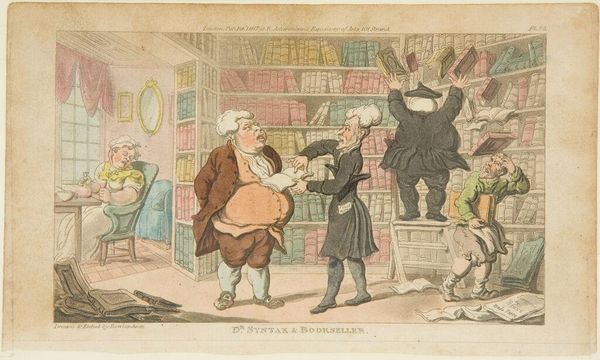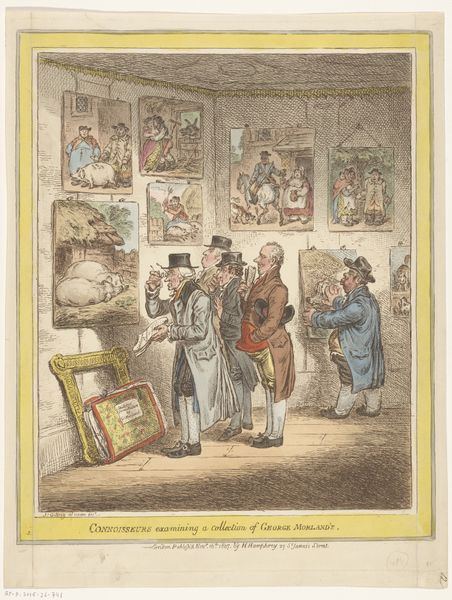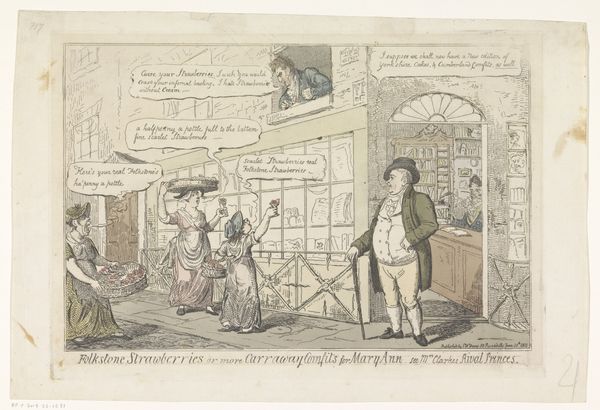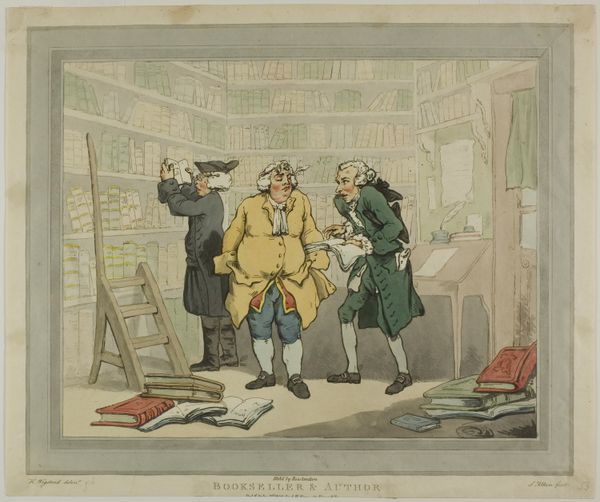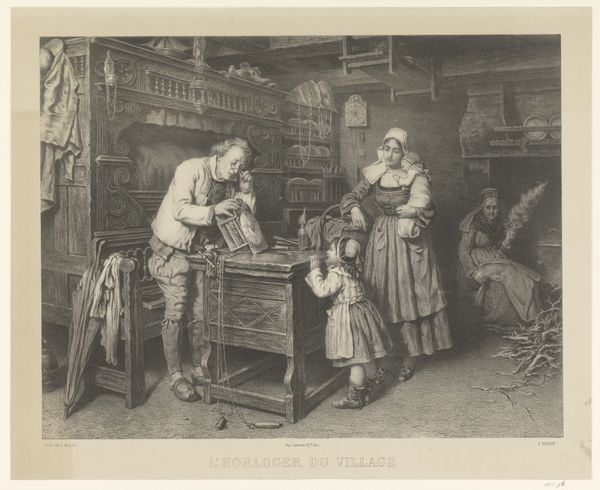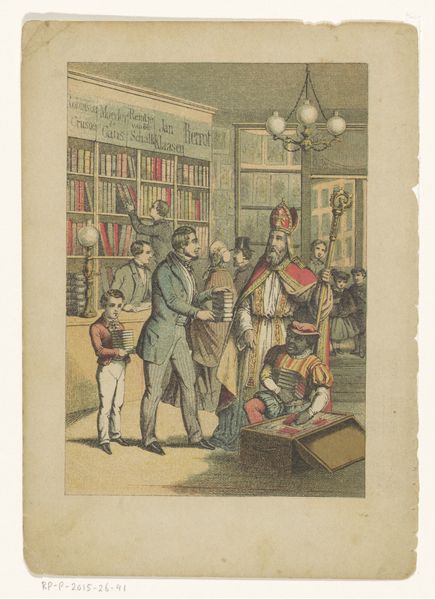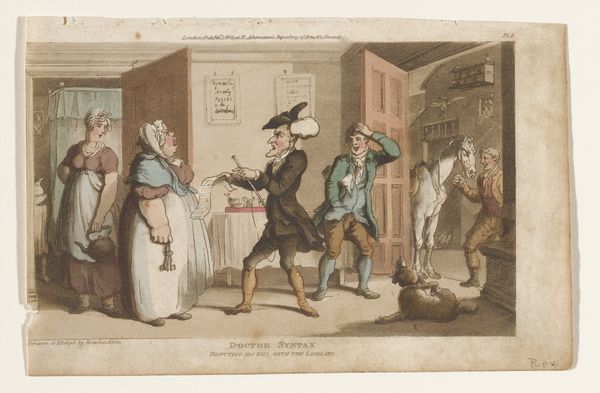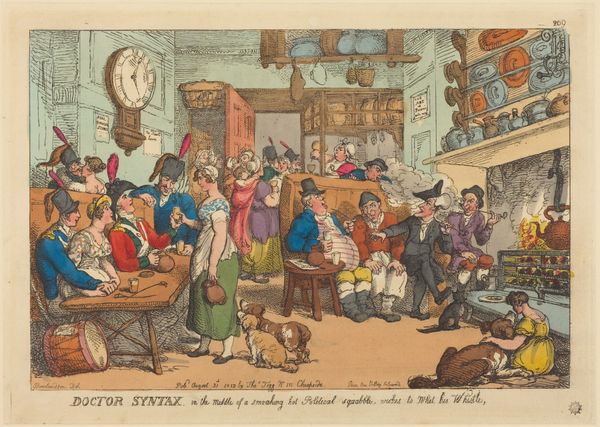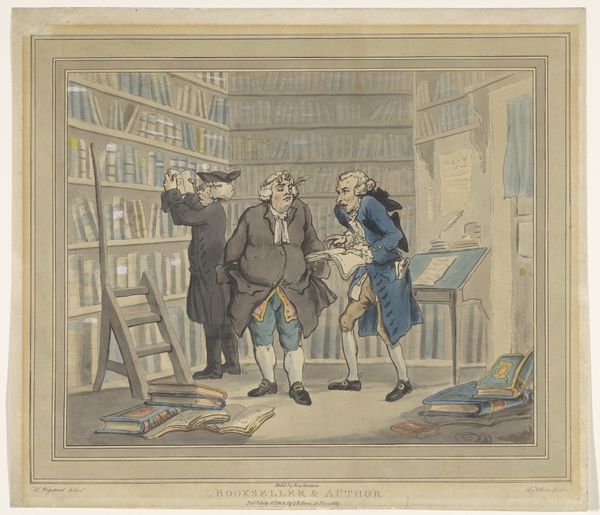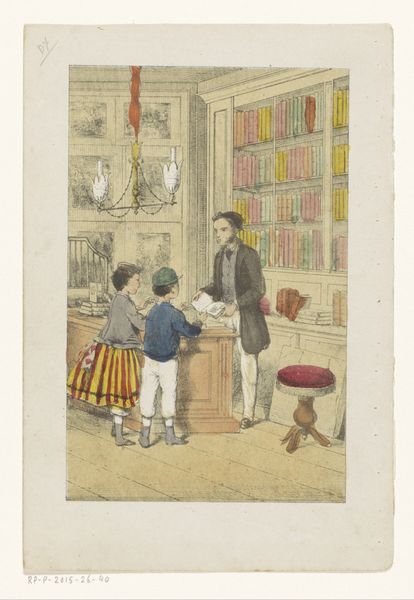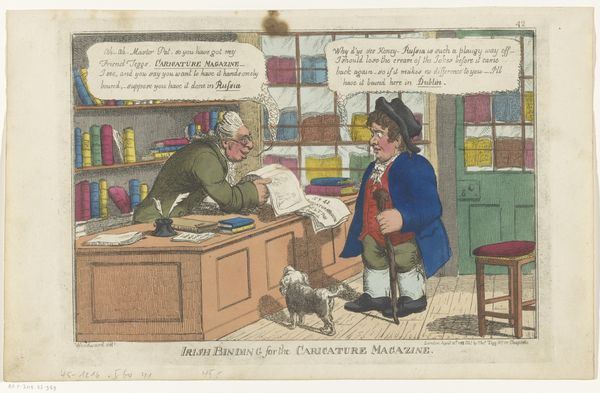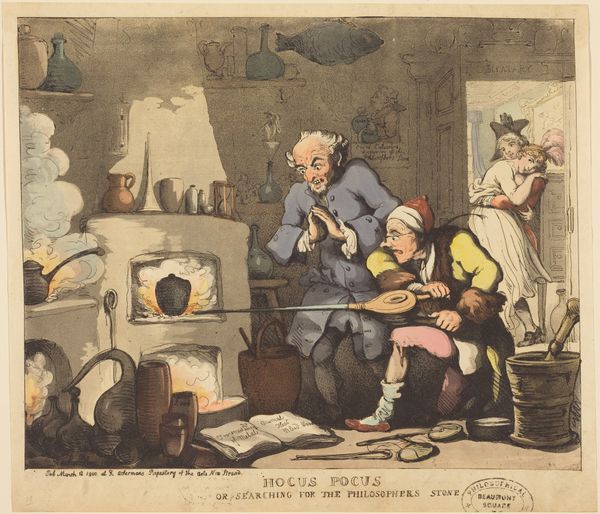
Dimensions: 4 3/4 x 7 1/4 in. (12.07 x 18.42 cm) (sheet)
Copyright: Public Domain
Editor: This is "Dr. Syntax and Bookseller," an aquatint print by Thomas Rowlandson from around 1815. It depicts a rather chaotic scene inside what appears to be a very full bookstore. I’m struck by how exaggerated and caricatured all the figures are. What kind of social commentary do you think Rowlandson is making here? Curator: This caricature allows us to engage with debates around class and access to knowledge in early 19th-century England. Note how Rowlandson employs exaggerated physical features - the bookseller's rotund figure versus the gaunt Dr. Syntax - to comment on societal hierarchies. This contrast implicates themes of intellectualism versus commercialism. What does this scene suggest to you about the role of literacy and learning in shaping social identities at the time? Editor: So, the visual contrasts aren’t just for comedic effect; they’re actually highlighting social inequalities? The struggling man atop the ladder and the well-fed bookseller visually reinforce that message, now that you mention it. Curator: Exactly. The act of acquiring knowledge, represented by the falling books, wasn’t a neutral pursuit. It was intertwined with economic and social capital. Rowlandson's prints were widely circulated, so how might this scene have resonated with contemporary audiences from various social strata? How do you think it plays into Romantic ideas of individualism and satire? Editor: I see. So it’s both entertaining but also subtly critical. I hadn't considered the accessibility aspect before; I was just focusing on the funny faces! It makes you wonder who could afford books, and who was actually doing the reading. Curator: And how the perception of these roles were defined and performed! Hopefully this print offers a rich landscape to reflect on the evolving interplay between identity, class, and knowledge consumption.
Comments
No comments
Be the first to comment and join the conversation on the ultimate creative platform.
